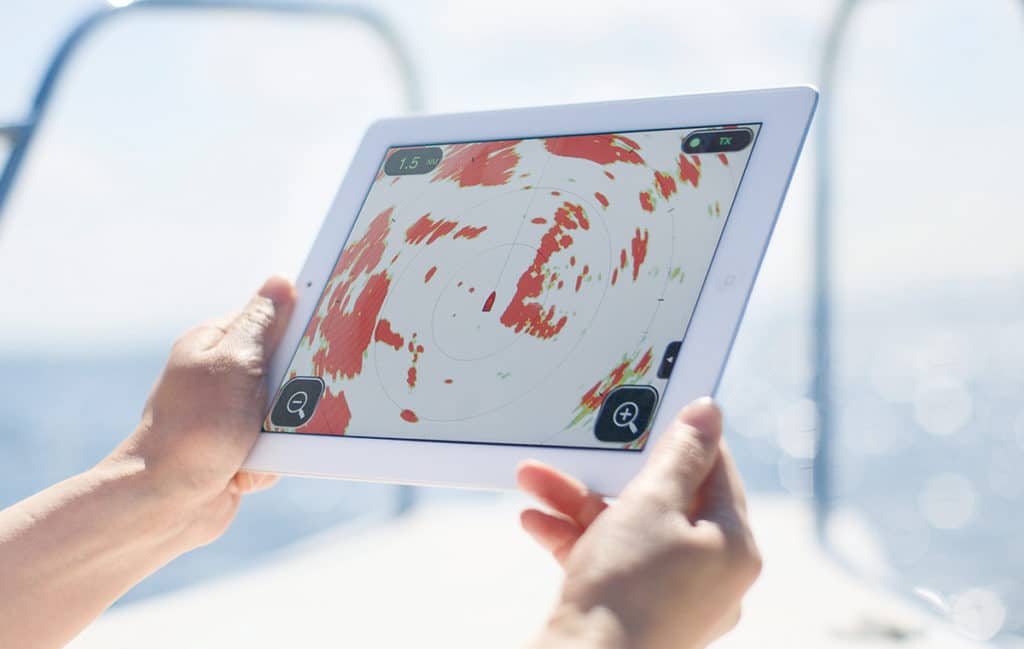
Q. How can I protect non-marine-rated consumer electronics from damage while they are on board?
A. Non-marine-rated electronics devices such as computers, mobile phones tablets and cameras can be damaged by water intrusion, physical damage and power considerations on a boat.
Protective water-resistant and waterproof cases, pouches and housings are available in a variety of shapes and sizes in marine hardware, sporting-goods stores and online.
Ordinary plastic bags also can be useful to guard against splash and spray, but should not be used to store devices for long periods on board. Such bags tend to collect moisture in a marine environment that may harm electronics over time.
Electronic devices like computers, smartphones and tablets also need to be secured on a boat to avoid physical damage from being dropped. Universal adjustable mounting brackets and padded cases are recommended when these items are not in your hand.
Dash- or panel-mounted 12-volt and USB receptacles can power portable DC-powered devices and charge their batteries, while 110-volt AC equipment such as TVs and computers can source their power from a 12-volt DC to 110-volt AC inverter.
Inverters
If you do not have a generator on board, you can obtain a marine inverter that can silently produce the 110-volt AC voltage you need from your boat’s 12- or 24-volt DC battery system.
Be sure to select an inverter that produces a pure sine wave AC power. This is required to operate TV sets, computers, satellite TV receivers and DVD players and similar devices.
Universal Power Supply
The same Universal Power Supply used to protect computers from losing your data in the event of a power failure or large fluctuation in AC power can also be used on a boat. Switching your 110 AC power from an inverter or generator to shore power can cause AC electronics to lock up and become inoperative.
At minimum, use a power strip between your satellite TV receiver, the TV and a computer and your 110 AC voltage source to minimize the effects of voltage spikes.
Wireless Charging Systems
ScanStrut created the ROKK series of wireless, waterproof (IPX6) charging pads for boating. These can be installed on a flat surface to charge devices like your smartphone without any physical wiring connection. You merely lay your device on the pad for charging.
The ROKK Edge combines wireless charging with a high-grip adjustable mounting bracket to hold your phone firmly in place while charging.
RAM Mounts has announced a similar mounting device that can be secured to a variety of boating surfaces and structures.
Dash, bulkhead or panel mounted 12-volt DC and USB receptacles (available at marine hardware stores) allow you to plug in and operate or charge your portable devices.
Water Resistant and Waterproof
Water and electronics don’t mix. Some of the electronics you may bring on board a boat may be water resistant or even waterproof. This will be indicated on your shore-based electronics specifications.
Water intrusion standards are expressed by an industry IPX index. IPX0, IPX1, IPX2 and IPX3 devices are not fit for sea duty.
However, IPX4 should tolerate some spray and splash. IPX5 will handle spray, splash and mild jet streams of water. IPX 4 and 5 are considered water resistant. IPX6 is basically waterproof. IPX7 and 8 are not only waterproof but are submersible down to a depth of 3 feet of water.
Protection Against Physical Damage
On shore electronic equipment, particular portable devices, need to be protected against impact and breakage. Universal mounting brackets and padded cases are recommended for these purposes. Two companies that offer such mounts include ScanStrut ROKK and RAM Mounts.









